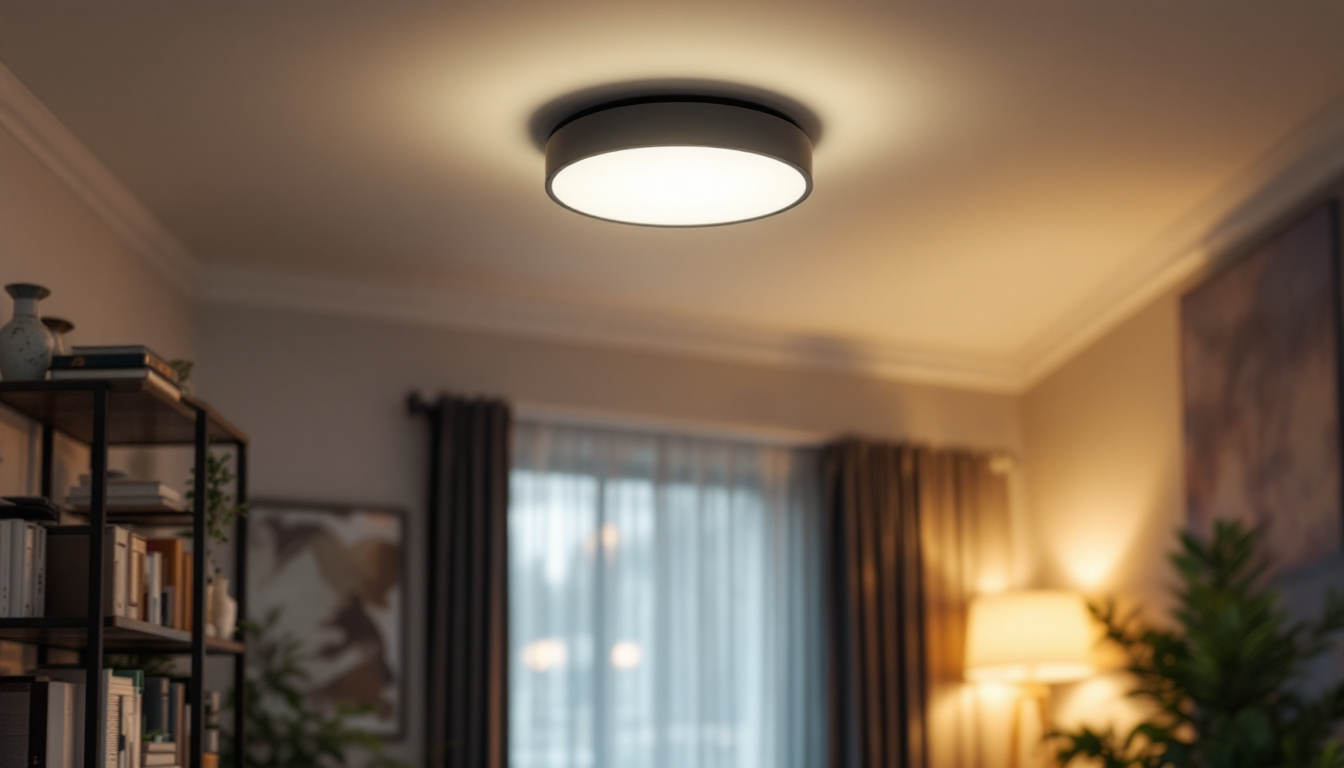
Outdoor flood lights equipped with motion sensors have gained popularity among homeowners and businesses alike. These lighting solutions offer enhanced security and convenience, automatically illuminating areas when movement is detected. For lighting contractors, understanding the functionality and benefits of these fixtures is essential when recommending options to clients.
Motion sensor flood lights can be particularly effective in deterring intruders, illuminating pathways, and enhancing the overall safety of outdoor spaces. The technology behind these lights has evolved, offering various features that can cater to different needs and preferences. However, it is crucial for contractors to weigh the advantages against alternative lighting solutions available in the market.
When considering motion sensor flood lights, several key features should be evaluated. These include the sensor’s range, sensitivity settings, and the duration of light activation. Most motion sensors can detect movement within a specific radius, typically ranging from 20 to 100 feet. Adjustability in sensitivity allows users to customize the detection level, ensuring that the lights activate only when necessary.
Another important feature is the duration that the lights remain on after activation. This can vary from a few seconds to several minutes, depending on the model. Some advanced systems even allow for customizable settings, enabling users to select the ideal duration based on their specific requirements.
One of the primary benefits of motion sensor flood lights is their energy efficiency. Since these lights only activate when motion is detected, they consume less power compared to traditional flood lights that remain on continuously. This not only reduces electricity costs but also extends the lifespan of the bulbs.
Additionally, motion sensor flood lights enhance safety and security. By illuminating dark areas when someone approaches, they can deter potential intruders and reduce the risk of accidents. This is particularly beneficial for residential properties, parking lots, and commercial spaces where visibility is critical.
While motion sensor flood lights offer numerous advantages, traditional flood lights remain a popular choice among lighting contractors. These fixtures provide consistent illumination, making them suitable for various applications. Understanding the differences between these two options can help contractors make informed decisions for their clients.
Traditional flood lights are known for their reliability and simplicity. They provide constant lighting, which can be beneficial in areas that require consistent visibility, such as driveways, parking lots, and outdoor event spaces. For contractors, this means fewer complications in installation and maintenance.
Moreover, traditional flood lights come in various wattages and designs, allowing for a wide range of customization options. This flexibility enables contractors to select the right lighting solution based on the specific needs of a project, whether it be for aesthetic purposes or functional requirements.
Despite their advantages, traditional flood lights have limitations that contractors should consider. One of the main drawbacks is their energy consumption. Since these lights remain on continuously, they can lead to higher electricity bills and increased wear on the bulbs.
Additionally, traditional flood lights do not provide the same level of security as motion sensor lights. They can illuminate an area consistently, but without the added benefit of detecting movement, they may not deter potential intruders effectively. This is an essential factor for clients who prioritize security in their lighting choices.
In recent years, smart lighting technology has emerged as a viable alternative to both motion sensor and traditional flood lights. Smart lights offer advanced features, such as remote control, scheduling, and integration with home automation systems. For lighting contractors, understanding these options is crucial for providing comprehensive solutions to clients.
Smart lighting systems often come with a variety of features that enhance their usability. Many of these systems can be controlled via smartphone apps, allowing users to adjust brightness, color, and even set schedules from anywhere. This level of control can significantly improve the convenience and functionality of outdoor lighting.
Moreover, some smart flood lights include built-in motion sensors, combining the benefits of both technologies. This means that contractors can offer clients a comprehensive solution that maximizes energy efficiency and security while providing the flexibility of smart home integration.
While smart lighting systems offer numerous advantages, they also come with unique considerations. Installation may require additional wiring or connectivity to Wi-Fi networks, which can complicate the process for contractors. It is essential to assess the existing infrastructure and determine if upgrades are necessary before recommending smart lighting solutions.
Furthermore, the cost of smart lighting systems can be higher than traditional options. Contractors should evaluate the client’s budget and needs to ensure that the investment aligns with their expectations and requirements.
Cost is a significant factor when selecting lighting solutions for any project. For lighting contractors, understanding the financial implications of motion sensor flood lights compared to traditional and smart options is crucial for providing accurate estimates to clients.
Motion sensor flood lights typically have a higher initial cost compared to traditional flood lights. However, the energy savings generated by their usage can lead to lower electricity bills over time. This is an essential consideration for clients looking to minimize operational costs while maintaining effective lighting solutions.
On the other hand, traditional flood lights may have a lower upfront cost, but their continuous operation can result in higher long-term expenses. Contractors should present a comprehensive cost analysis to clients, highlighting the potential savings associated with motion sensor lights.
Smart lighting systems often represent the highest initial investment among the options discussed. However, they offer added value through advanced features and increased control over lighting conditions. For clients who prioritize technology and convenience, the long-term benefits may justify the higher upfront costs.
When discussing costs with clients, contractors should emphasize the importance of considering not only the initial investment but also the long-term savings and benefits associated with each lighting option. This holistic approach can help clients make informed decisions that align with their needs and budgets.
Installation is a critical phase in any lighting project. For lighting contractors, understanding the specific requirements and challenges associated with motion sensor flood lights, traditional flood lights, and smart lighting systems is essential for ensuring a successful installation.
When installing motion sensor flood lights, it is important to position the sensors correctly to maximize their effectiveness. Ideally, the sensors should be placed at a height that allows for optimal detection of movement while minimizing false triggers from animals or environmental factors.
Additionally, contractors should consider the angle and range of the sensor when determining placement. Testing the sensor’s functionality after installation can help ensure that it operates as intended, providing the desired level of security and convenience for clients.
For traditional flood lights, installation is generally straightforward. However, contractors should still ensure that the fixtures are mounted securely and positioned to provide adequate coverage of the intended area. Proper wiring and connection to power sources are also crucial to avoid potential hazards.
Contractors should also consider the use of timers or photocells to enhance the functionality of traditional flood lights. These additional features can help automate the lighting system, providing a level of convenience similar to motion sensor options.
Ultimately, the choice between motion sensor flood lights, traditional flood lights, and smart lighting systems depends on the specific needs and preferences of the client. For lighting contractors, understanding the benefits and limitations of each option is essential for providing tailored recommendations.
When consulting with clients, contractors should take the time to assess their specific needs and preferences. Factors such as the purpose of the lighting, budget constraints, and desired features should all be considered to ensure that the chosen solution aligns with the client’s vision.
It can also be beneficial to discuss the potential for future upgrades or expansions. For instance, clients who may want to incorporate smart technology down the line might prefer motion sensor flood lights that can integrate with smart home systems.
Lighting contractors should aim to provide comprehensive solutions that address the unique requirements of each project. This may involve offering a combination of lighting options, such as integrating motion sensor flood lights with traditional fixtures or smart lighting systems.
By presenting clients with a range of choices and explaining the benefits and limitations of each, contractors can empower clients to make informed decisions that enhance their outdoor spaces while ensuring safety and efficiency.
As outdoor lighting technology continues to evolve, lighting contractors must stay informed about the latest trends and innovations. Motion sensor flood lights, traditional flood lights, and smart lighting systems each offer unique advantages and challenges that can impact the overall effectiveness of a lighting project.
By understanding the nuances of each option and assessing client needs, contractors can make informed recommendations that enhance security, efficiency, and convenience. The right choice will ultimately depend on the specific requirements of the project, but with careful consideration, contractors can provide solutions that meet and exceed client expectations.
Ready to elevate your lighting projects with the best in motion sensor flood lights, traditional fixtures, and smart lighting systems? Look no further than LumenWholesale, where we provide contractors with superior, spec-grade lighting at unbeatable wholesale prices. Our commitment to quality and affordability ensures you can deliver top-notch lighting solutions to your clients without the burden of inflated costs. Plus, with the convenience of free shipping on bulk orders, you can trust that you’re getting premium lighting at the best value — every time. Don’t compromise on quality or price; choose LumenWholesale for all your lighting needs. Wholesale Lighting at the Best Value.

Discover how Exit Sigh simplifies processes for lighting contractors, boosting efficiency and reducing project delays.

Explore the innovative strategies of Waffer Light, a leading smart lighting contractor, as they revolutionize the industry with cutting-edge technology and sustainable solutions.

Discover the ultimate guide to selecting the best lighting solutions for makeup application, tailored specifically for lighting contractors.

Discover how lighting contractors can enhance their projects with flush mount LED ceiling light fixtures.